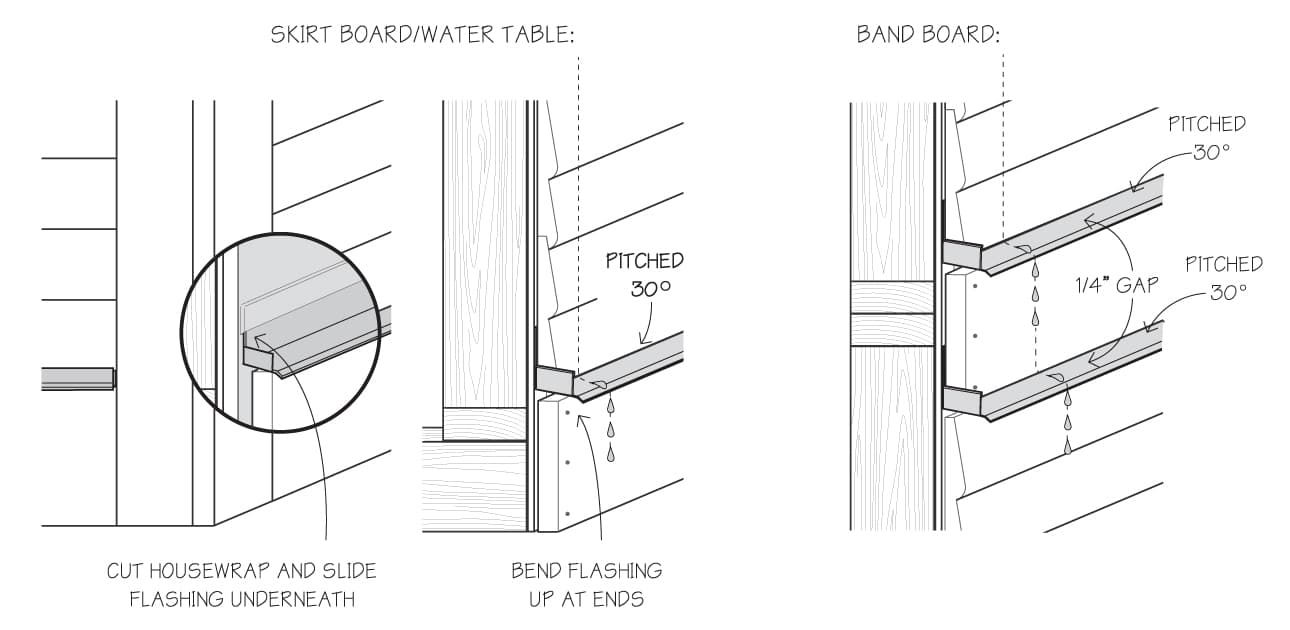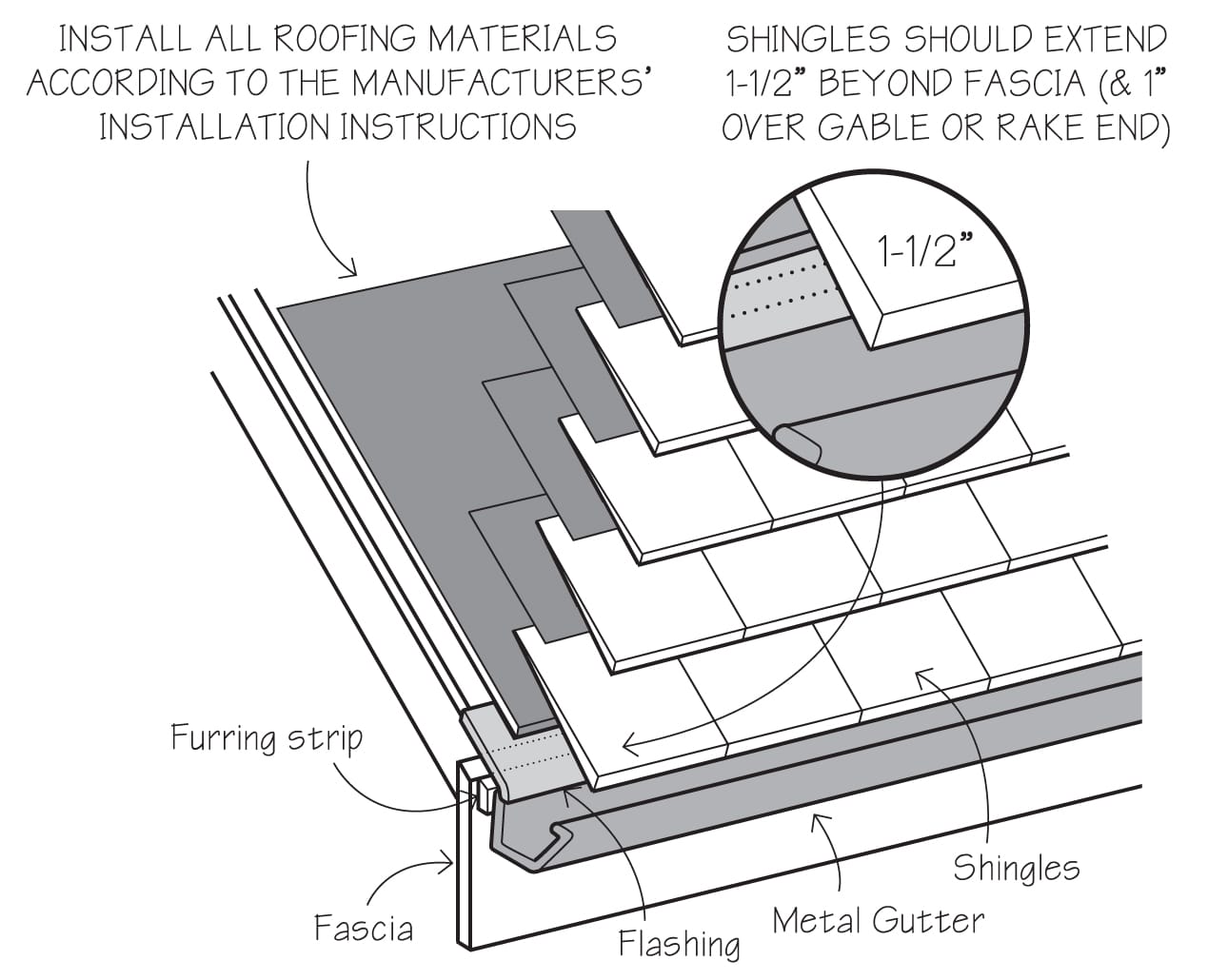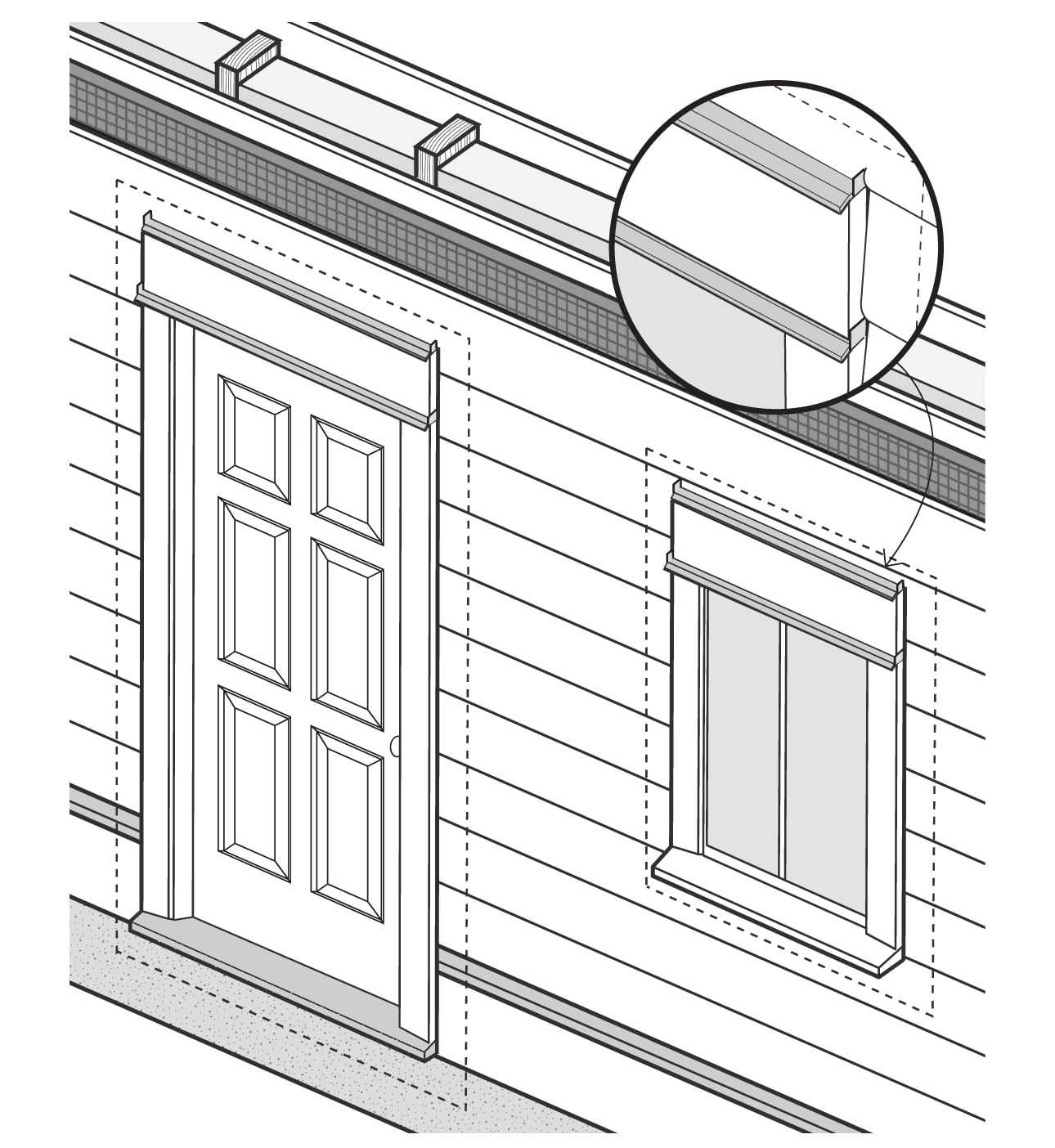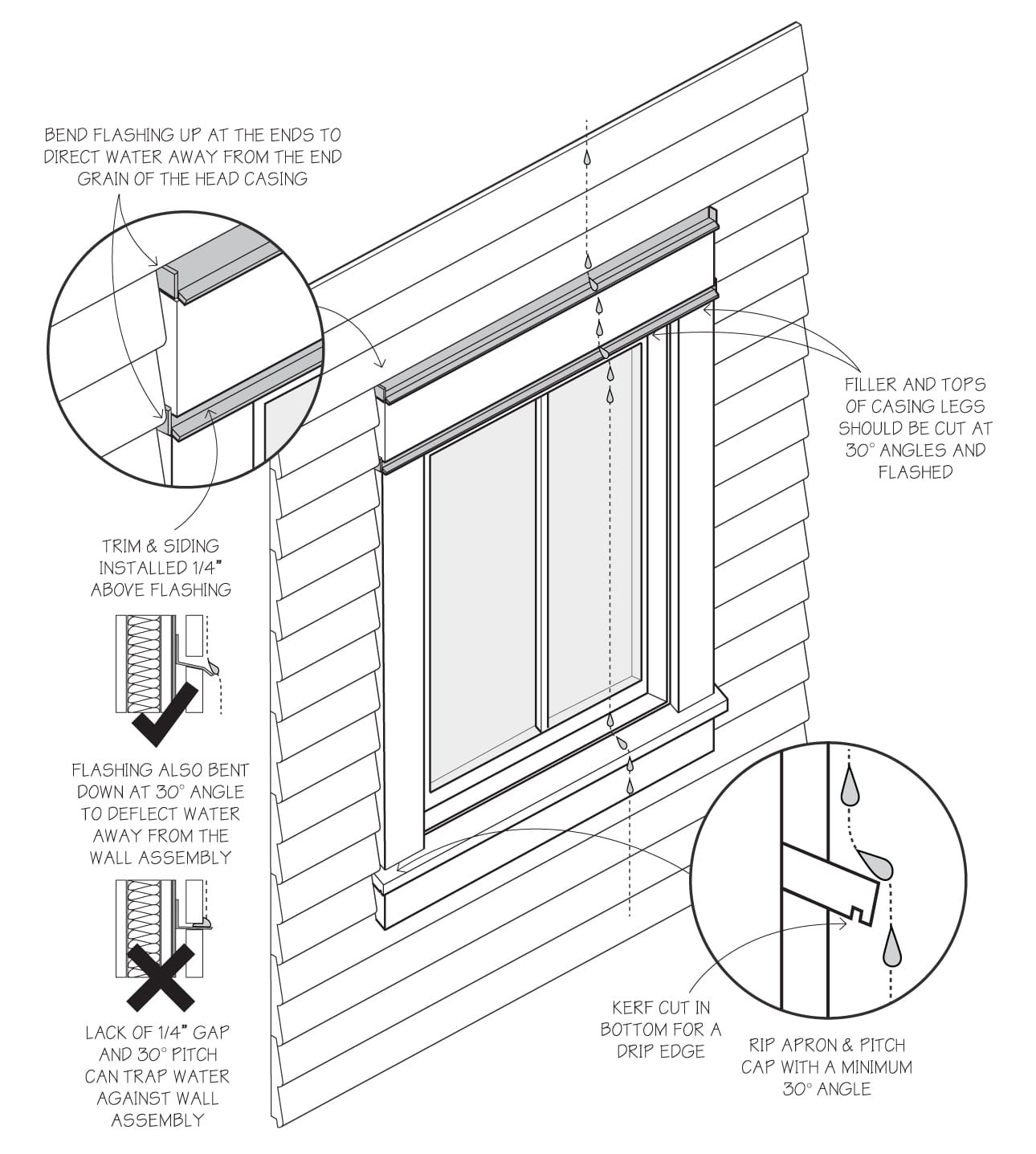
Proper flashing is imperative
Flashing is an important line of defense against water in wall assemblies. Use flashing to intercept and direct the flow of water away from the building to designed drainage paths. Install horizontal flashing extending from the top of all windows and doors and where there is any change in material or direction. The flashing should tilt downward (~30 degrees) to allow water to drain away from the wall. Do not caulk where the flashing and Trim or other materials meet. Note that caulking in lieu of flashing is not acceptable.

FASCIA AT SHINGLE EDGE
Use a drip edge flashing to support the shingle edge and to provide a drip edge to prevent water from running back underneath the roofing shingles and down along the fascia and soffit. Preformed eaves flashing/drip edge should be installed under the starter course of the shingle roofing. If eavestroughs (rain gutters) are used, the flashing edge also helps to direct the water into troughs. Fascia flashing protects both the soffit and the fascia board, and provides a drip edge at the bottom edge to direct water away from the building. The use of rain gutters/eavestroughs is highly recommended to catch and redirect the flow of water down and away from walls.

DOOR & WINDOW FLASHING
Flash window and door headers to intercept water from behind the siding and Trim and direct it away from the wall assembly. Moisture can enter the cavity behind siding as a result of: Water penetration around the siding & Trim; water vapor diffusion; or leakage of moist air from the interior. Flashing above and below the head casing is the best method to direct water away form the window & door openings.
Window Construction Detail
